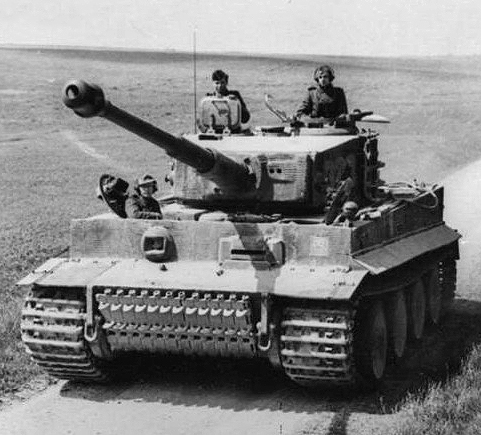WELCOME!! REZZED COLLECTIBLES
1:18 scale WWII German Tiger I Tank is approximately 13 inches long (17 inches long with gun), and features a camouflage paint scheme.
THIS IS IT! BRAVO TEAM WILL NOT BE MAKING ANYMORE 1/18 TIGER TANKS
This Tiger I tank is part of Forces of Valor's 1:18 scale Bravo Team series.
The tank features a rotating turret, a gun that elevates, and hatches that open and close. It also features rolling treads.
Tiger I is the common name of a German heavy tank developed in 1942 and used in World War II. The final official German designation was Panzerkampfwagen VI Tiger Ausf.E, often shortened to Tiger. It was an answer to the unexpectedly impressive Soviet armour encountered in the initial months of the Axis invasion of the Soviet Union, particularly the T-34 and the KV-1. The Tiger I design gave the Wehrmacht its first tank mounting the 88 mm gun, in its initial armoured fighting vehicle-dedicated version (KwK 36), which in its Flak version had previously demonstrated its effectiveness against both air and ground targets, as early as the Battle of France in the anti-armour role. During the course of the war, the Tiger I saw combat on all German battlefronts. It was usually deployed in independent tank battalions, which proved to be quite formidable.
While the Tiger I was feared by many of its opponents, it was over-engineered, used expensive and labour intensive materials and production methods, and was time-consuming to produce. Only 1347 were built between August 1942 and August 1944. The Tiger was prone to certain types of track failures and immobilizations, and limited in range by its huge fuel consumption. It was, however, generally mechanically reliable but expensive to maintain. It was also complicated to transport, and vulnerable to immobilization when mud, ice and snow froze between its overlapping and interleaved road wheels in winter weather conditions, often jamming them solid. In 1944, production was phased out in favour of the Tiger II.
The tank was given its nickname "Tiger" by Ferdinand Porsche, and the Roman numeral was added after the later Tiger II entered production. The initial official German designation was Panzerkampfwagen VI Ausführung H (‘Panzer VI version H’, abbreviated PzKpfw VI Ausf. H), with ordnance inventory designation SdKfz 182, but the tank was redesignated as PzKpfw VI Ausf. E in March 1943, with ordnance inventory designation SdKfz 181.
Today, only a handful of Tigers survive in museums and exhibitions worldwide. The Bovington Tank Museum's Tiger 131 is currently the only one restored to running order.

